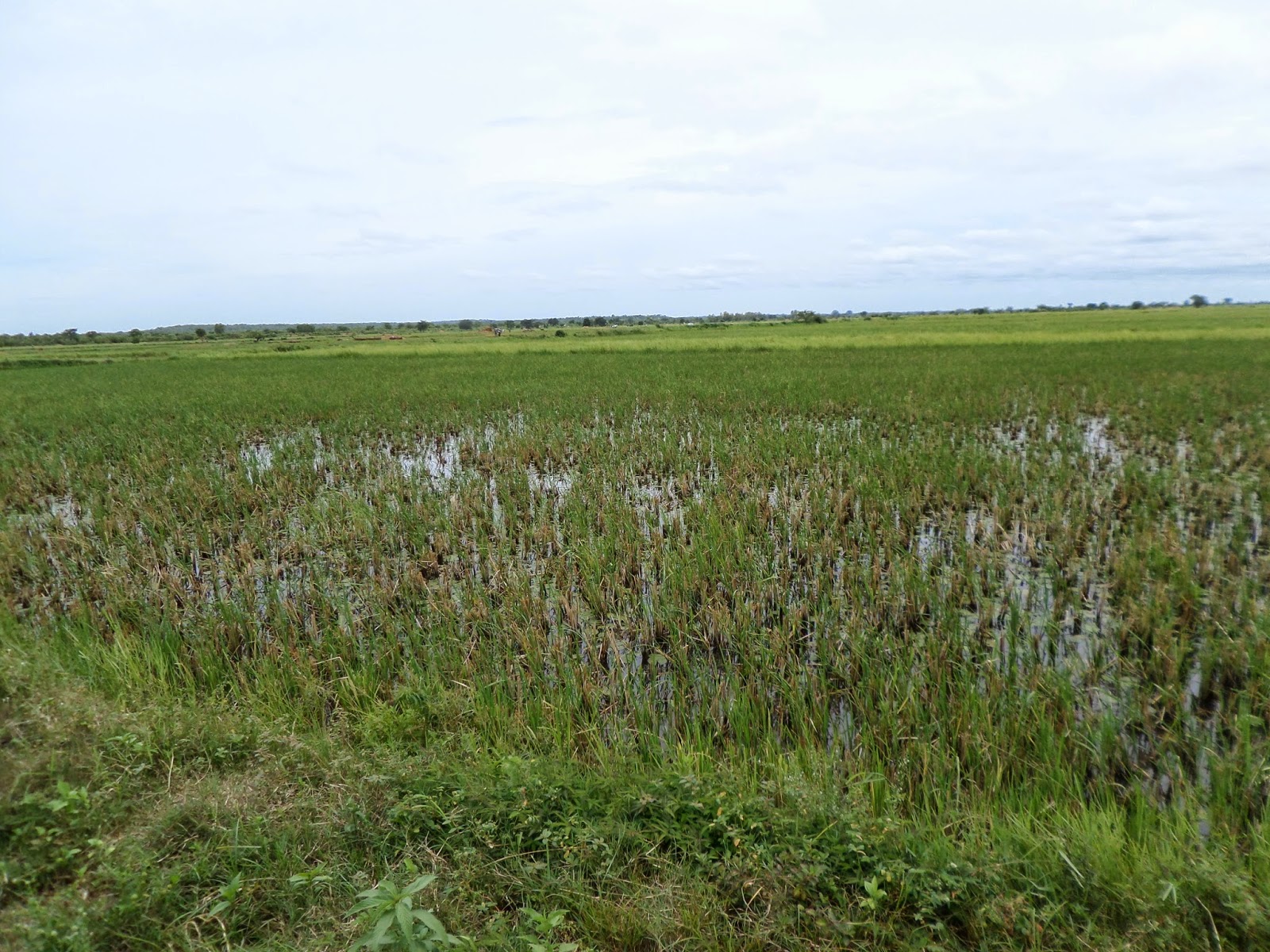Rice is a very important crop for the farmers in Mali and is one of the principal
foods of the Mali people. In this post I will describe using text and pictures the fascinating process of rice production by the rural farmers in southern Mali.
 |
| Rice fields flooded by the Niger River irrigation canals |
Because these fields are flood irrigated from the river, they can grow rice all year around. Typically, they plant in July and harvest in December then plant again in January and harvest in June. The farmers purchased the immature rice plants from the nurseries and plant them by hand in their fields.
 |
| Rice fields ready to harvest near Selingue, Mali |
The rice takes four to five months to mature depending on the variety. During this time the fields are flooded several times depending on the weather and the needs of the rice. The Mali farmers pay the government
water office for the water that they use.
 |
| The rice is harvested by workers with a hand scythe and gathered in bundles |
This rice field has recently been harvested. The rice plant is cut and laid on top of the remaining stalk for several days to dry out. It is then gathered in bundles and carried to the road ready to be threshed.
 |
| A portable rice thresher that goes from field to field doing custom threshing |
Portable threshing machines are hauled around the valley from field to field to thresh the rice. The rice straw is either burned there in the fields or taken back to the villages to be used as animal feed during the dry season. The rice is spread out on the ground and allowed to dry before being milled, cleaned, and sold in the market.
 |
| Rice drying on plastic tarps near the farmers home |
This farmer spread his rice on large tarps near his home. The roads make a nice flat place to lay the tarps to dry the rice. Occasionally I have seen the grains spread out on the paved roads even without a tarp. Sometimes the traffic will attempt to avoid the grain, but sometimes they will just drive right over the top of it.
 |
| Using the breeze to clean the chaff from the rice before taking it to market |
Once the milling has taken place the rice is cleaned by pouring it out onto a large tarp while a breeze is blowing. The lighter rice chaff will be carried to the side, leaving just the rice itself. It is not uncommon to see chickens, goats, or other farm animals helping themselves to the chaff. The rice is scooped into 90 kg bags and hauled to the market using donkey carts or various other forms of transportation.






Comments
Post a Comment